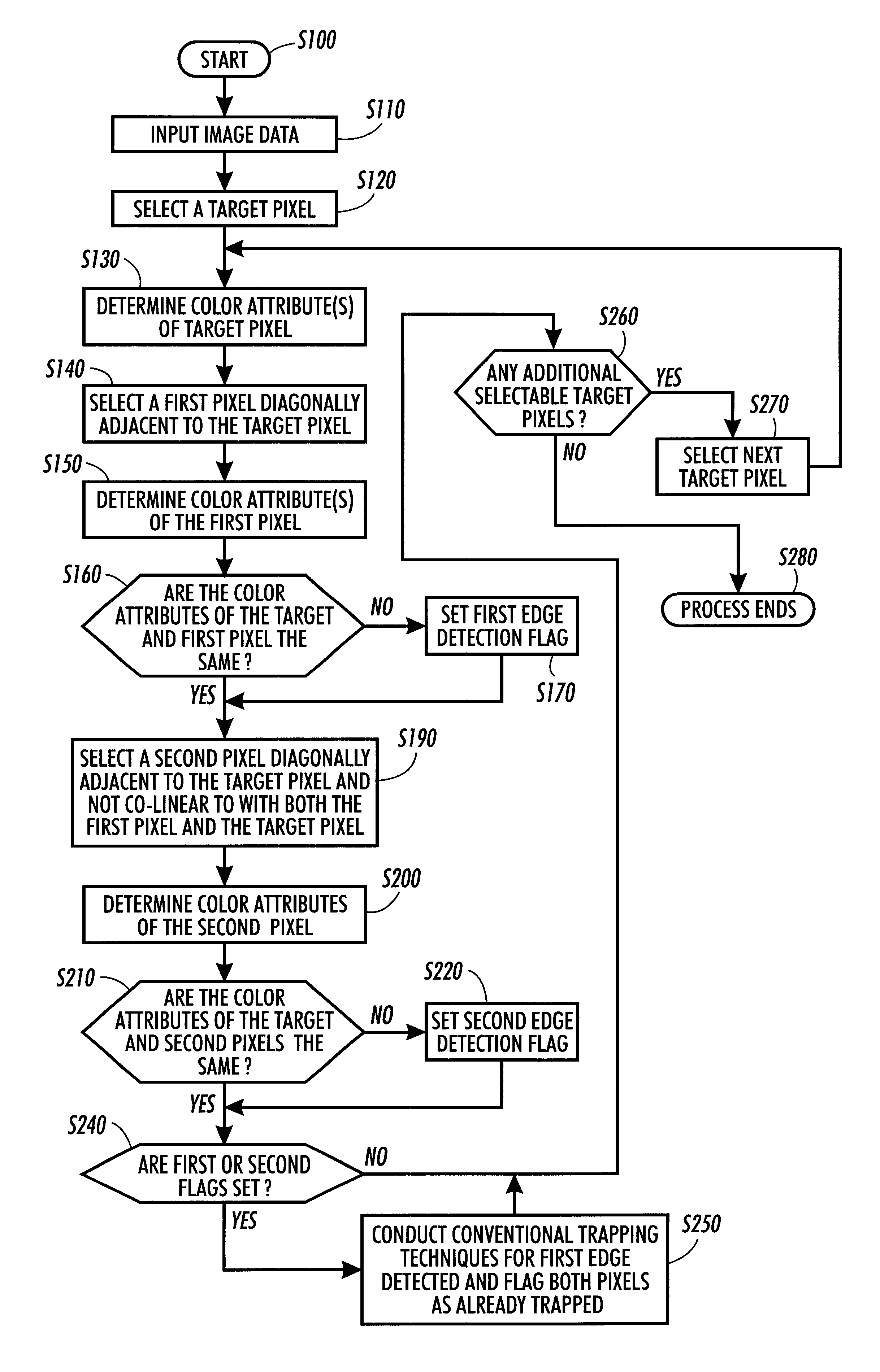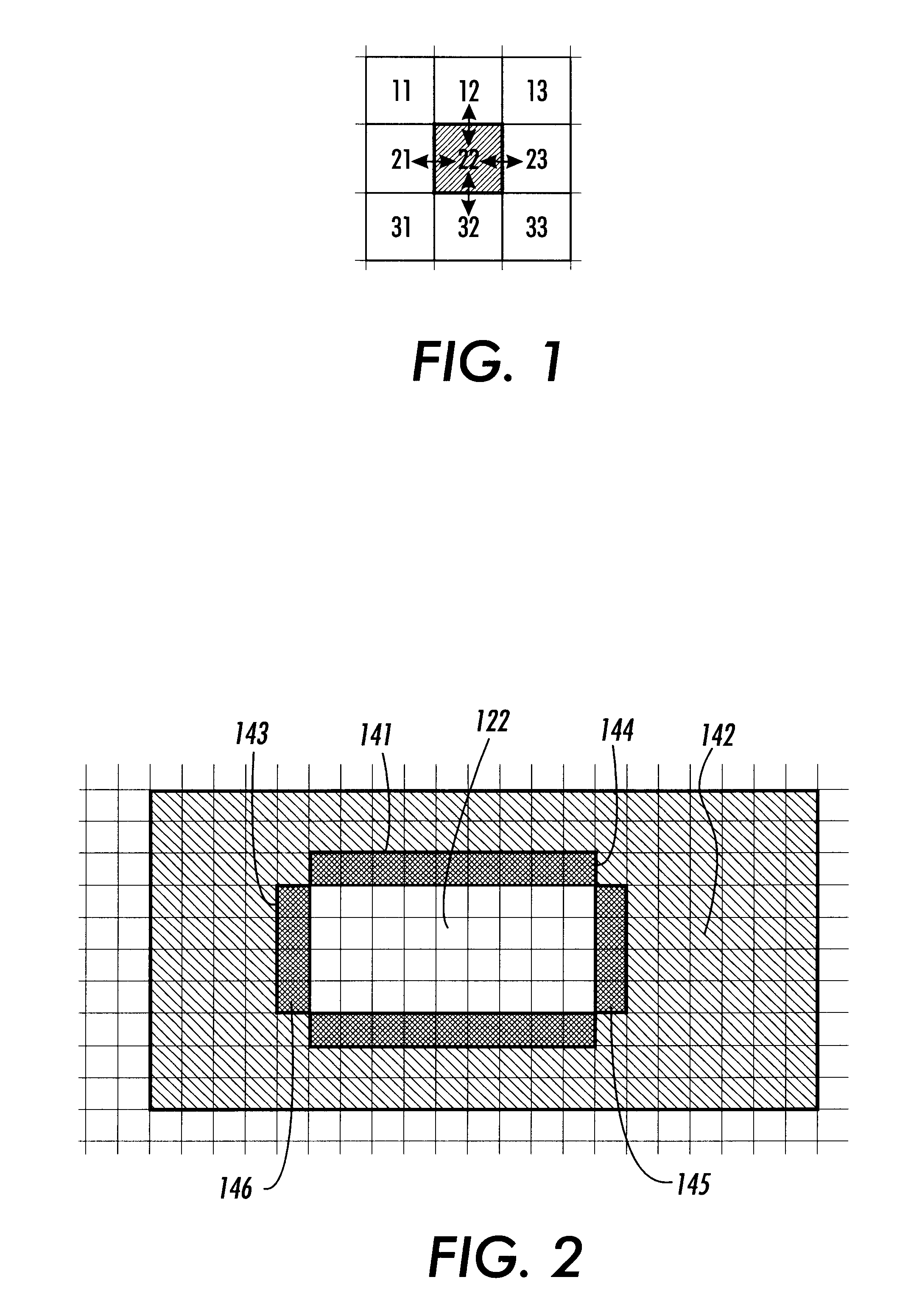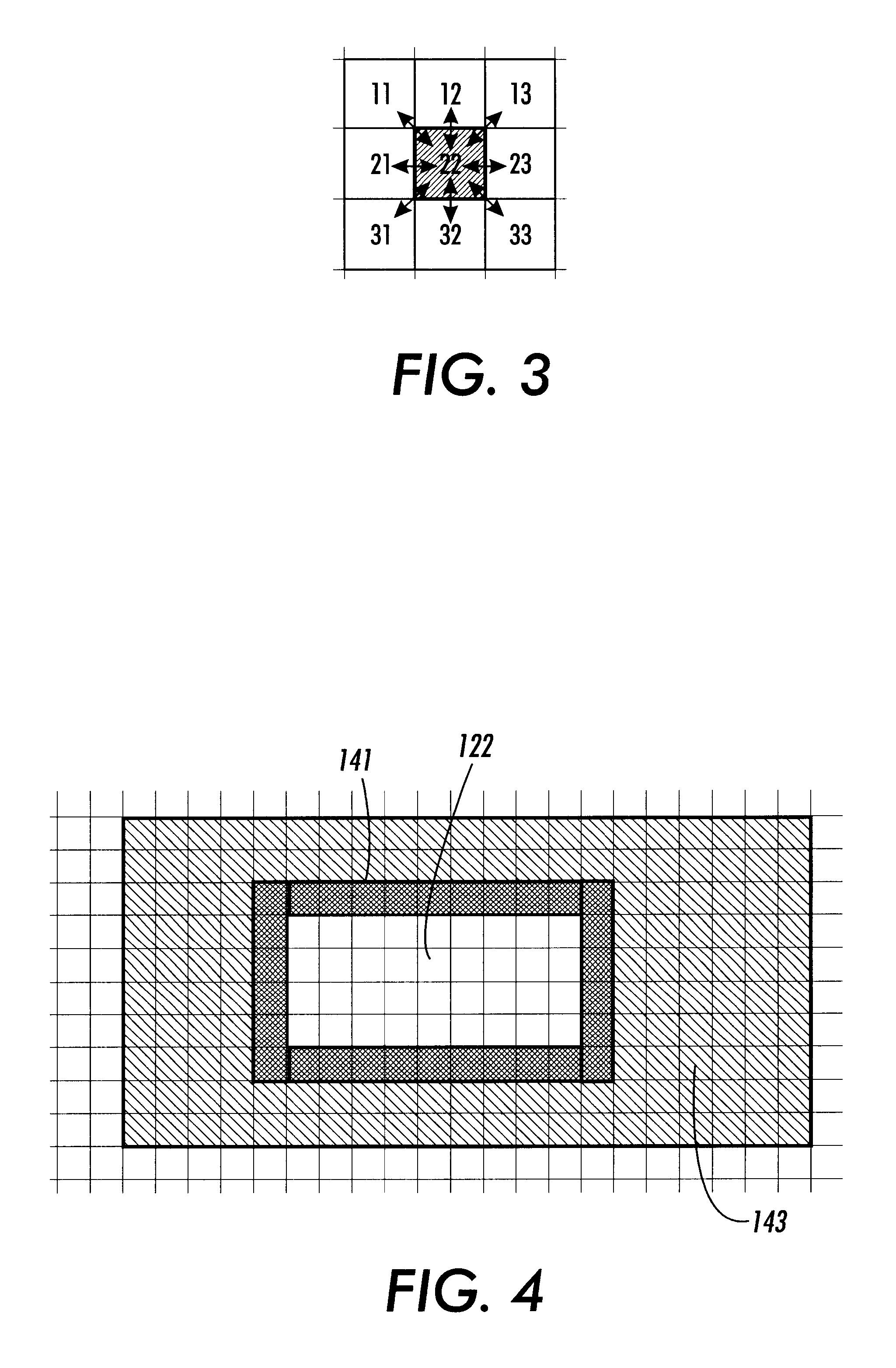Methods and systems for detecting the edges of objects in raster images using diagonal edge detection
a technology of raster images and edges, applied in the field of color images, can solve the problems of excessive time, increased system time for edge detection routines, and insufficient detection accuracy, and achieve the effect of improving system efficiency and reducing the number of errors
- Summary
- Abstract
- Description
- Claims
- Application Information
AI Technical Summary
Problems solved by technology
Method used
Image
Examples
Embodiment Construction
This invention includes methods and systems that look for edges between pixels by selecting each pixel and comparing the color attributes, such as such as hue, brightness, saturation and / or the amount of cyan, magenta, yellow and black colorants of the pixel with two diagonally neighboring pixels. The two neighboring pixels are non-colinear with respect to the selected pixel.
FIG. 5 generally illustrates one exemplary embodiment of the methods and systems for determining if trapping of raster images along horizontal, vertical or diagonal directions is required according to this invention. The methods and systems according to this invention scan for edges between pixels and, for example, their upper left and lower left diagonal neighbors. There are both horizontal and vertical components in each of these two tests. Thus, in most applications, the required edges are detected. The need to only conduct two tests, rather that the four or eight tests, as in the conventional systems and met...
PUM
 Login to View More
Login to View More Abstract
Description
Claims
Application Information
 Login to View More
Login to View More - R&D
- Intellectual Property
- Life Sciences
- Materials
- Tech Scout
- Unparalleled Data Quality
- Higher Quality Content
- 60% Fewer Hallucinations
Browse by: Latest US Patents, China's latest patents, Technical Efficacy Thesaurus, Application Domain, Technology Topic, Popular Technical Reports.
© 2025 PatSnap. All rights reserved.Legal|Privacy policy|Modern Slavery Act Transparency Statement|Sitemap|About US| Contact US: help@patsnap.com



